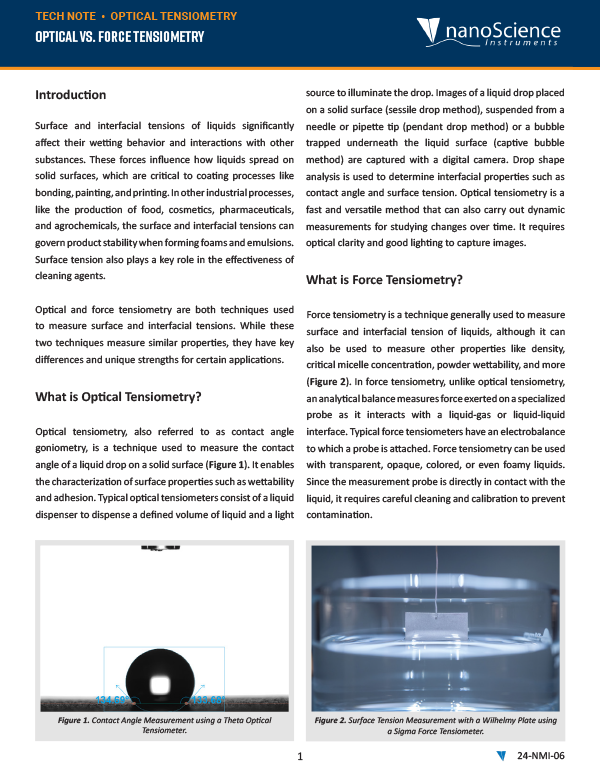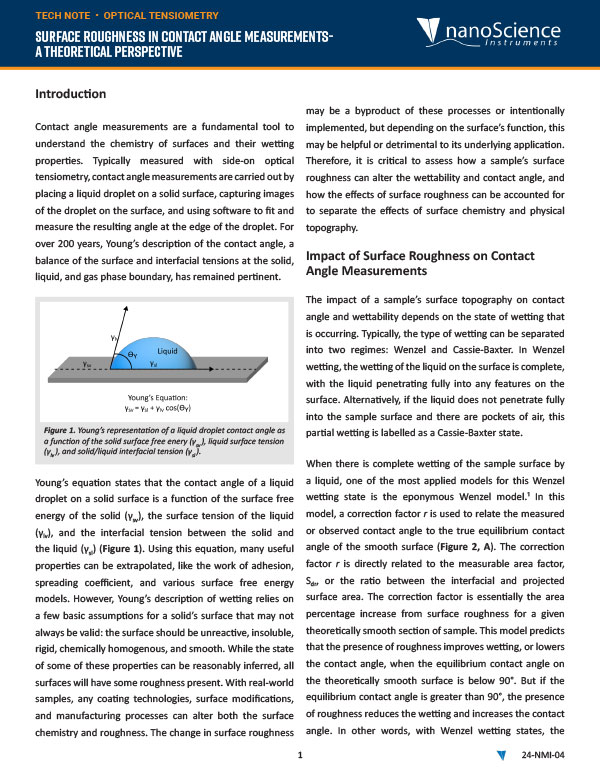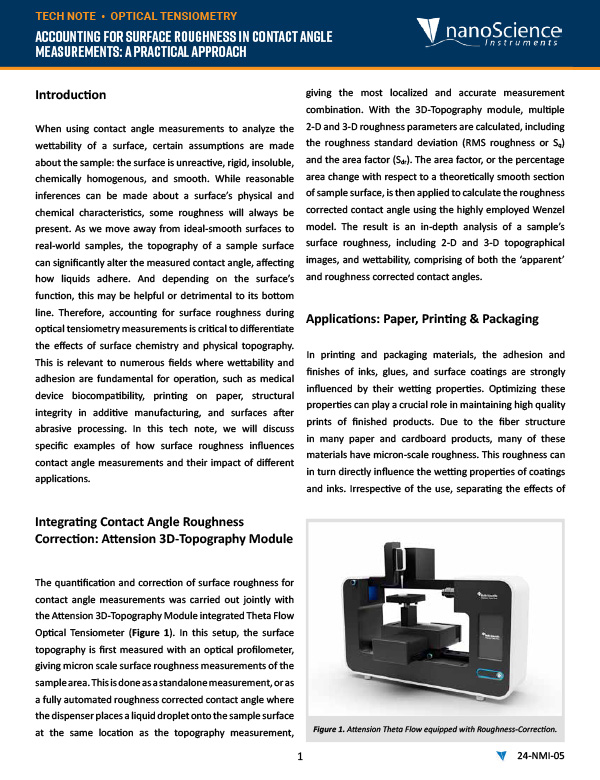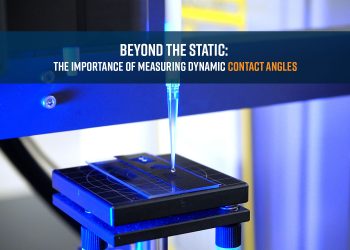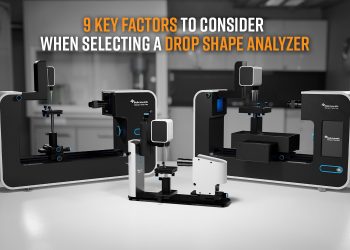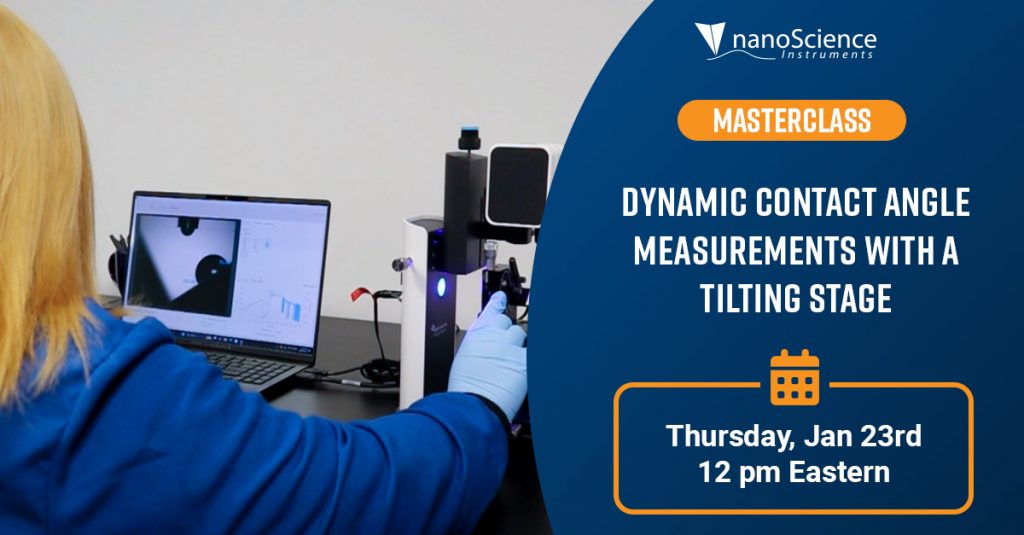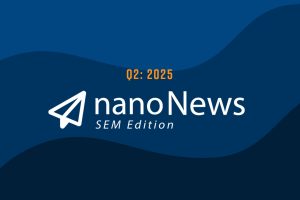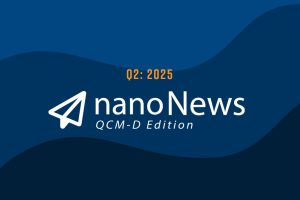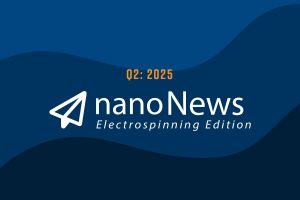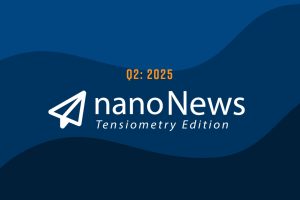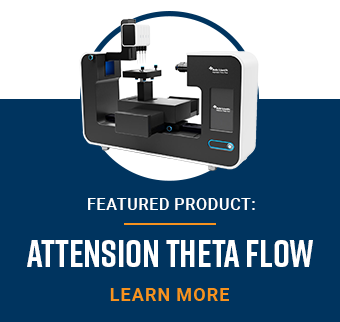

Welcome to the fourth quarter Tensiometry edition of the Nanoscience Instruments newsletter, nanoNews. We are excited to share the latest updates from around the Tensiometry community with you!
In this newsletter you will find recent Masterclasses, blogs, and white papers that expand on surface roughness in contact angle measurements, measuring dynamic contact angles, and emphasizing the key factors for choosing an Attension Optical or Force Tensiometer.
Follow us on LinkedIn to stay up to date on news, publications and more!

NEWS & UPDATES
NEW Liquid Dispensers for Attension Theta Flow, Flex & Lite
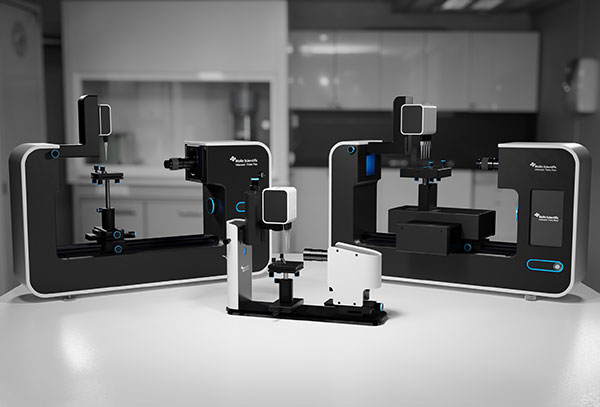
We are thrilled to share the news about this exciting enhancement to the full range of Attension Theta Optical Tensiometers! With an all-new design that allows the use of up to 4 different liquids, these advanced new dispensers enable more precise dispensing of low surface tension liquids, small volume drops, as well as high density and high viscosity liquids.
From high volume QA/QC measurements to complex surface energy characterization, the new dispensers will allow users of Theta Flow, Flex, and Lite instruments to boost the accuracy and repeatability of their measurements.

WHITE PAPERS
Tech Note: Optical vs. Force Tensiometry
Surface and interfacial tensions of liquids significantly affect their wetting behavior and interactions with other substances. These forces influence how liquids spread on solid surfaces, which are critical to coating processes like bonding, painting, and printing. In other industrial processes, like the production of food, cosmetics, pharmaceuticals, and agrochemicals, the surface and interfacial tensions can govern product stability when forming foams and emulsions. Surface tension also plays a key role in the effectiveness of cleaning agents.
This White Paper covers both Optical and force tensiometry techniques that measure surface and interfacial tensions. While these two techniques measure similar properties, they have key differences and unique strengths for certain applications.
Tech Note: Surface Roughness in Contact Angle Measurements – A Theoretical Perspective
Contact angle measurements are a fundamental tool to understand the chemistry of surfaces and their wetting properties. Typically measured with side-on optical tensiometry, contact angle measurements are carried out by placing a liquid droplet on a solid surface, capturing images of the droplet on the surface, and using software to fit and measure the resulting angle at the edge of the droplet. For over 200 years, Young’s description of the contact angle, a balance of the surface and interfacial tensions at the solid, liquid, and gas phase boundary, has remained pertinent.
This White Paper examines how a sample’s surface roughness can alter the wettability and contact angle, and how the effects of surface roughness can be accounted for to separate the effects of surface chemistry and physical topography.
Tech Note: Accounting for Surface Roughness in Contact Angle Measurements – A Practical Approach
When using contact angle measurements to analyze the wettability of a surface, certain assumptions are made about the sample: the surface is unreactive, rigid, insoluble, chemically homogenous, and smooth. While reasonable inferences can be made about a surface’s physical and chemical characteristics, some roughness will always be present. As we move away from ideal-smooth surfaces to real-world samples, the topography of a sample surface can significantly alter the measured contact angle, affecting how liquids adhere. And depending on the surface’s function, this may be helpful or detrimental to its bottom line.
This White Paper explores accounting for surface roughness during optical tensiometry measurements that are critical to differentiate the effects of surface chemistry and physical topography.
BLOGS
Beyond the Static: The Importance of Measuring Dynamic Contact Angles
When exploring the wettability of a surface, the most used technique is measuring the liquid contact angle. This has been true for >200 years, since the relationship between liquid and …
9 Key Factors to Consider when Selecting a Drop Shape Analyzer
Optical tensiometers, also referred to as goniometers, contact angle meters, or drop shape analyzers, are essential tools in materials science, enabling precise measurements of surface and interfacial tension of liquids …

MASTERCLASSES
We are hosting a series of Theta Optical Tensiometry demonstration masterclasses. This series will focus on different techniques, like tilting or roughness corrected contact angle measurements. We hope this series will inspire current and potential Theta tensiometry users to expand their measurement arsenal and gain the knowledge necessary to apply these techniques confidently.
Session 1: Dynamic Contact Angle Measurements with Tilting Cradle – ON DEMAND
Session 2: Roughness Corrected Contact Angle – ON DEMAND
Session 3: Contact Angles at the Picoliter Scale – ON DEMAND
Session 4: Dynamic Contact Angle Measurements with a Tilting Stage – Jan. 23, 2025
Session 5: Captive Bubble and Interfacial Tension Measurements – UPCOMING
Session 6: Dilatational Interfacial Rheology – UPCOMING

CONFERENCE CORNER
MD&M West 2025 | February 4-6 | Anaheim, CA
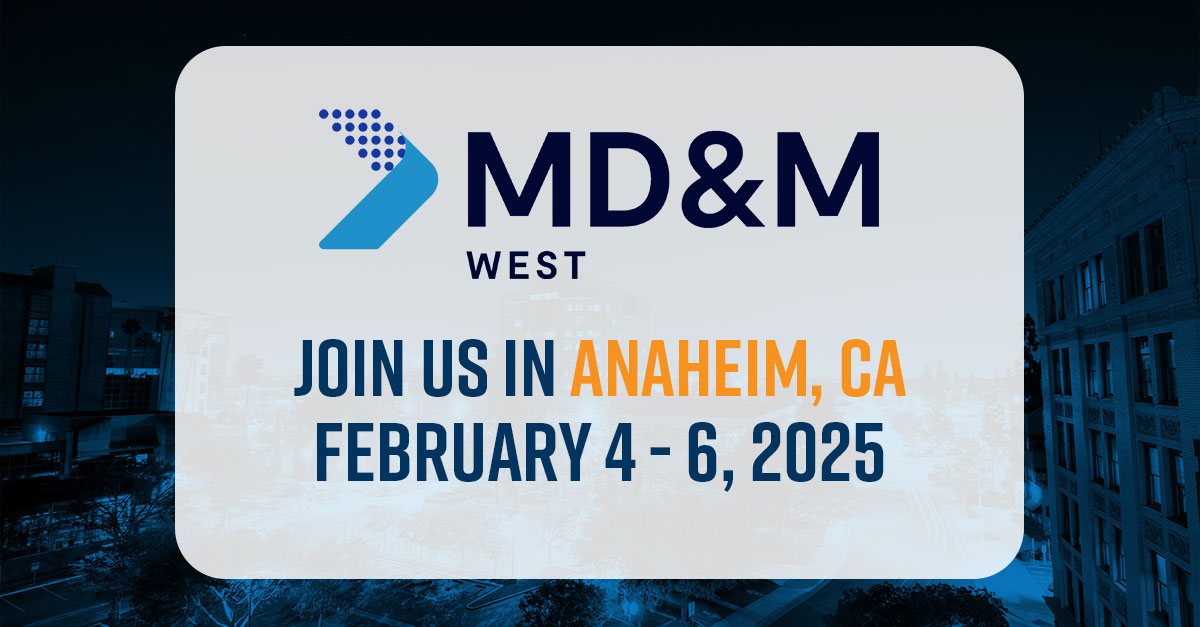
Visit us in Booth #541 at MD&M West to see the new Attension Theta dispensers in action! You will also have the chance to talk to our Application experts about the latest advancements in surface science research solutions. Follow us on LinkedIn for more updates about MD&M West!

SERVICE & SUPPORT
Are you interested in upgrading your Attension Optical Tensiometer’s dispenser to add automated dispensing of more than 2 liquids?
Whether you have several coating formulations to test on a surface material or you would like to fully automate surface free energy (SFE) measurements, the new Attension dispensers provide greater flexibility by allowing the use of up to 4 different liquids.
These new dispensers are compatible with existing Theta Flow, Flex, and Lite systems, with different adapters depending on your current instrument configuration.
To discover the upgrade path for your instrument, please reach out to our Application Support/Service Team by using the link below:
*Note: In light of the launch of these new dispensers, we are committed to continuing Service and Support for existing Theta customers. From the date of launch, full service for legacy Theta dispensers will continue for 5 years, concluding on June 19, 2029. If you have questions about whether this applies to your instrument, please reach out to us at info@nanoscience.com.

RECENT ATTENSION PUBLICATIONS
Discover recently published journal articles from our Attension Customers!
- Gravity-driven Flow of Liquid Bridges Between Vertical Fibres: https://doi.org/10.1017/jfm.2024.794
- Dip Coating of Shear-thinning Particulate Suspensions: https://doi.org/10.1039/D4SM00941J
- A Comparative Study of Alkyl Chain Silanes and Poly Dimethyl Siloxane Liquid-like Brushes as Pfas-free Liquid-repellent Fabric Coatings: https://doi.org/10.1016/j.porgcoat.2024.108670
- PTFE Layer Formation During Brush Electroplating of Nickel: https://doi.org/10.1038/s41598-024-71376-5
- Quantifying Mechanical Abrasion of AgNP Nanocomposites: Influence of AgNP Content on Abrasion Products and Rate of Microplastic Production: https://doi.org/10.1039/D3EN00888F
If you are an Attension Theta or Sigma user and would like your paper to be featured in a future newsletter, please send us a link to the publication via email: marketing@nanoscience.com.

